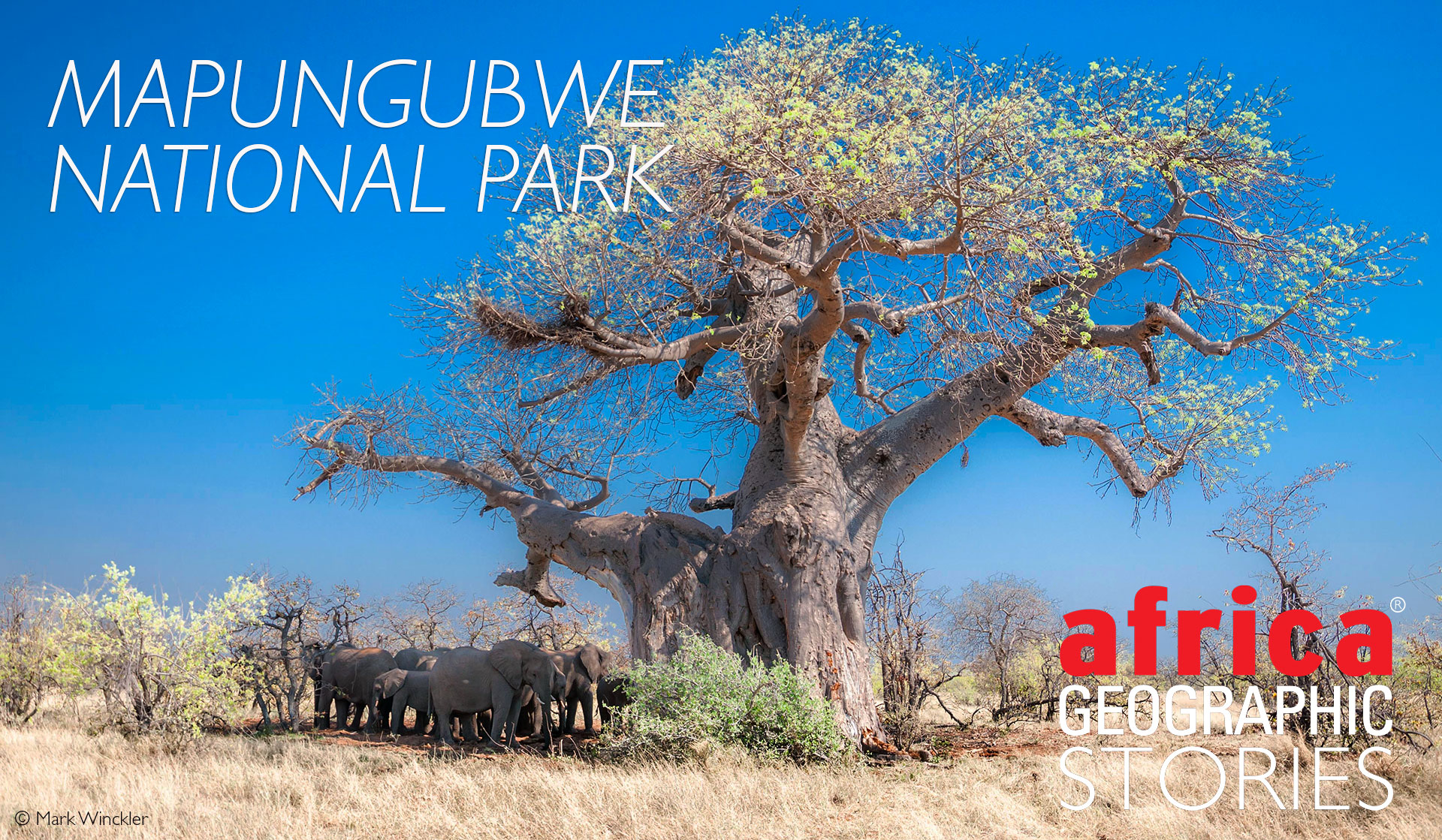
Ancient culture, baobabs and giants


There is an undercurrent of mysticism that pervades the arid savannahs of Mapungubwe National Park. Here, as the wind whistles past sandstone ridges and boulder-strewn kopjes, it seems to carry echoes of the park’s vibrant history. Gnarled baobabs stand sentinel around every corner, squat and silent witnesses to the changing fortunes of the region’s human and animal inhabitants.
Mapungubwe is one of South Africa’s most evocative protected spaces, beckoning to intrepid travellers and promising a journey of discovery.
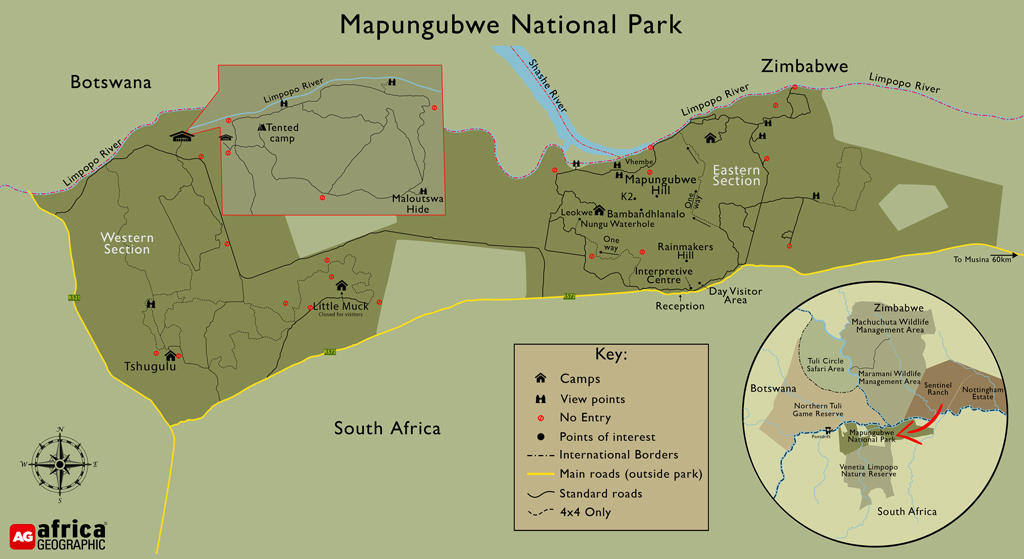
Mapungubwe National Park
Situated in the northernmost reaches of South Africa against the border of Botswana and Zimbabwe, the relatively tiny 28,000-hectare Mapungubwe National Park safeguards a precious chunk of the country’s heritage. From the lush riverine forests and magnificent trees to the expansive savannahs and rugged sandstone formations, the park’s scenic beauty cannot be overstated. Its northern boundary is marked by the iconic Limpopo River, where visitors can stare out over its confluence with the Shashe River and marvel at the massive herds of elephants crossing between countries without care for international borders.

To the north, across Kipling’s “great grey-green, greasy Limpopo River” on the Botswana side, lies the Northern Tuli Game Reserve, which, in turn, is contiguous with Zimbabwe’s Tuli Circle Safari Area. The Venetia Limpopo Nature Reserve lies south of Mapungubwe, with Vhembe Game Reserve to the west and Mapesu Private Game Reserve to the southeast. These protected landscapes and several private properties in all three countries will form the cornerstone of the Greater Mapungubwe Transfrontier Conservation Area (GMTCA). The GMTCA is still under development, but when it reaches its full envisioned potential, it will conserve nearly 5,000 km2 (500,000 hectares) of unique and vital southern African wilderness.
 Considering the Tuli area for your next African safari? Read more about a safari in Tuli here, or check out our ready-made safaris here.
Considering the Tuli area for your next African safari? Read more about a safari in Tuli here, or check out our ready-made safaris here.
The creation of the GMTCA should help to ensure that the conservation of Mapungubwe’s extravaganza of natural beauty and legendary wildlife will remain a priority. However, for most visitors, the park’s human history takes centre stage, as this remarkable sanctuary was once home to the oldest known kingdom in southern Africa. The Kingdom of Mapungubwe – its capital perched atop the golden ridges of Mapungubwe Hill – flourished just under a thousand years ago. Today, its remnants lie scattered across the landscape, offering tantalising clues into the lives of its occupants during a time of power and prestige.
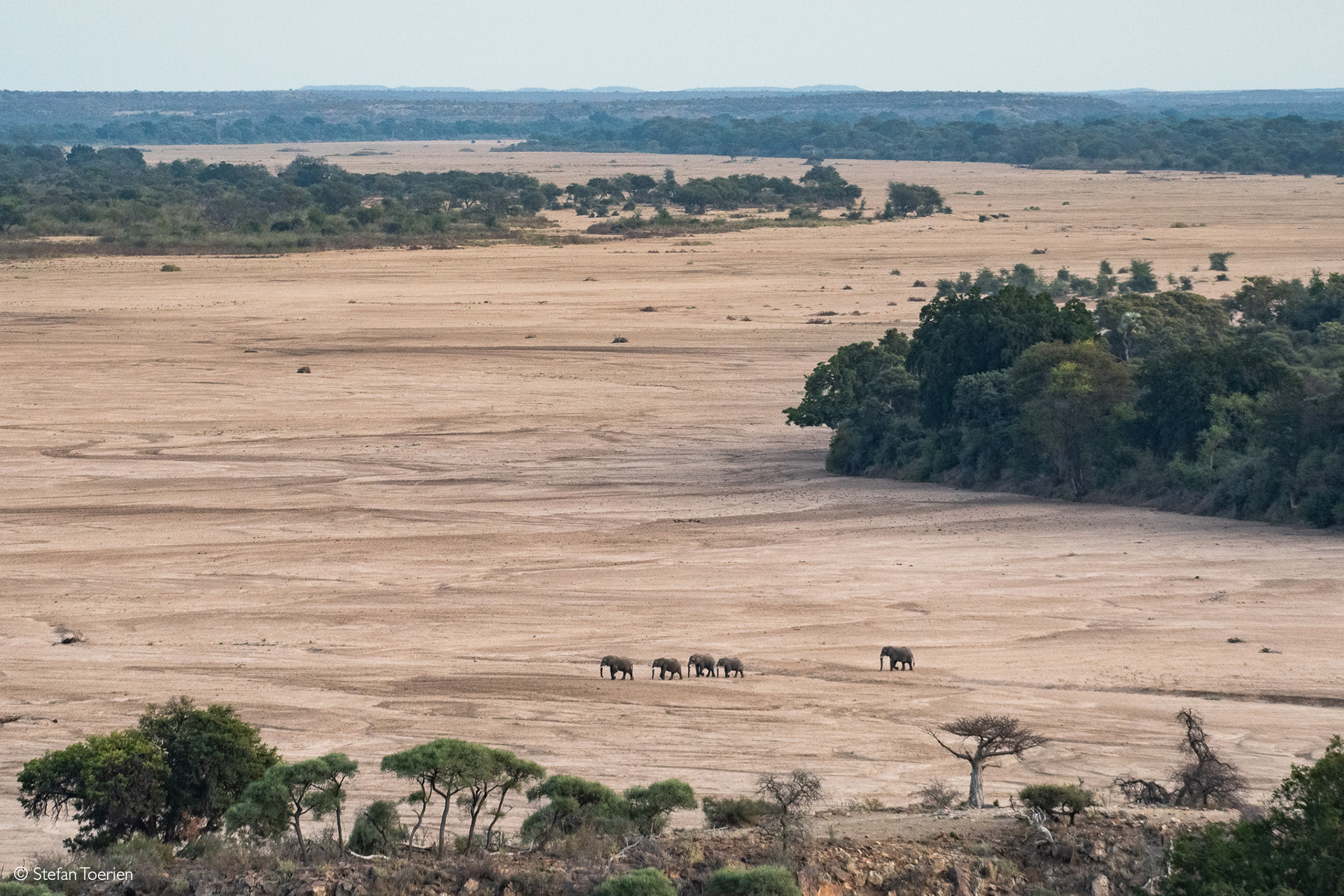

Golden rhinos, lucrative trade, and lofty rulers
Though Mapungubwe, and the Mapungubwe Hill in particular, had long held a vital cultural significance to the area’s local people, its archaeological importance came to light in the 1930s when an excavation uncovered a treasure trove of artefacts. Over time, the findings revealed the rise and fall of a complex Iron Age society (some 5,000 people at the civilisation’s height) that occupied the region from around circa AD 900-1300. It soon became clear that the Kingdom of Mapungubwe had been a hub of trade and cultural exchange, with links to the Middle East, India and China via East African ports.
Among the most famous discoveries were gold and ivory objects, including an exquisite golden rhinoceros, which has become a symbol of the park and its history. This palm-sized artefact was delicately crafted (right down to the minute details of its ears, horn, and tail) from wood and covered in thin sheets of gold – a testament to the skill and artistry of its creator. Other finds included delicate ceramics, glass beads, and terracotta figurines.
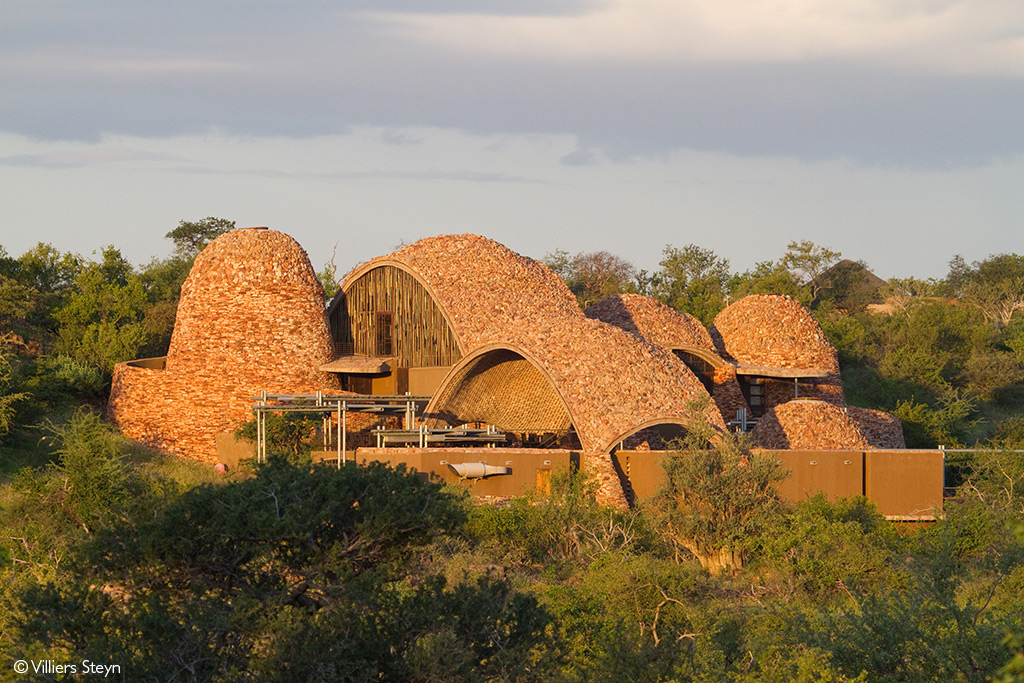
Exactly why the civilisation collapsed is a matter for some debate, with several theories ranging from changing climates to shifting trade routes posited. Whatever the reason, by the 14th century, the people of the Kingdom of Mapungubwe had moved on. Historians believe that the three best-known stone-walled kingdoms of southern Africa – Mapungubwe, Great Zimbabwe and Thulamela – were all connected, with people migrating first from Mapungubwe to Great Zimbabwe and then on to Thulamela over the centuries.
Today, the Mapungubwe Cultural Landscape is a Unesco World Heritage Site. Visitors to Mapungubwe can learn more about this fascinating period of South African history at the park’s Interpretation Centre. The centre’s unique architecture is a marvel in itself, while the museum displays inside include some of the original artefacts (and some replicas) and a wealth of information. A guided heritage walk to the top of Mapungubwe Hill, where the kingdom’s rulers once dwelled in a walled fortress, looking down on the “commoners” in the valleys below, is another must.

Everything the light touches…
From the top of Mapungubwe Hill, looking down on a landscape painted in shades of ochre, green and gold, it is easy to imagine how the rulers of old must have felt about their precious realm. The kingdom’s people may be long gone, but the wildlife they shared their space with remains, much to the joy of eager safari-goers.
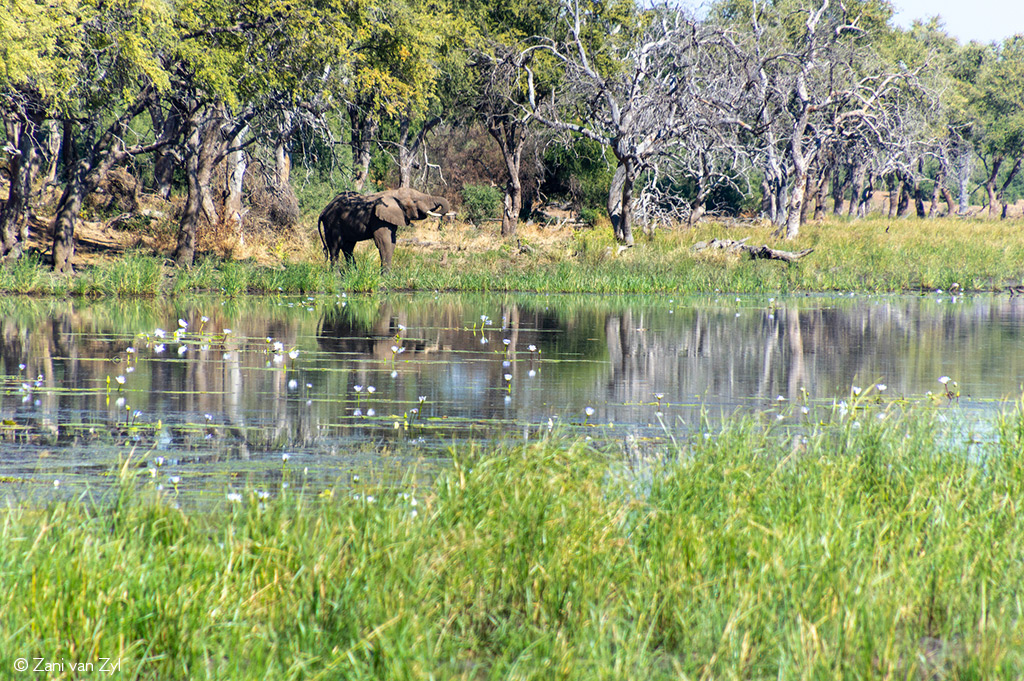
Though cultural curiosities typically eclipse wildlife viewing in this small national park, that is not to say that Mapungubwe is not an impressive safari destination in its own right. This is especially true as it lies between the arid habitats to the west and the moist Lowveld savannahs to the east, allowing for incredible variety and biodiversity. Elephants are everywhere in Mapungubwe, and every corner seems to reveal another special sighting, from breeding herds and young calves playing in the mud to placid old bulls napping in the shade of a baobab or nyala tree. The plains and mopane woodlands support a variety of antelope species, including massive eland, stately oryx, delicate impala and shy steenbok. Above them on the kopjes, nimble klipspringers leap from boulder to boulder, their hooves beautifully designed for life on the rocks.
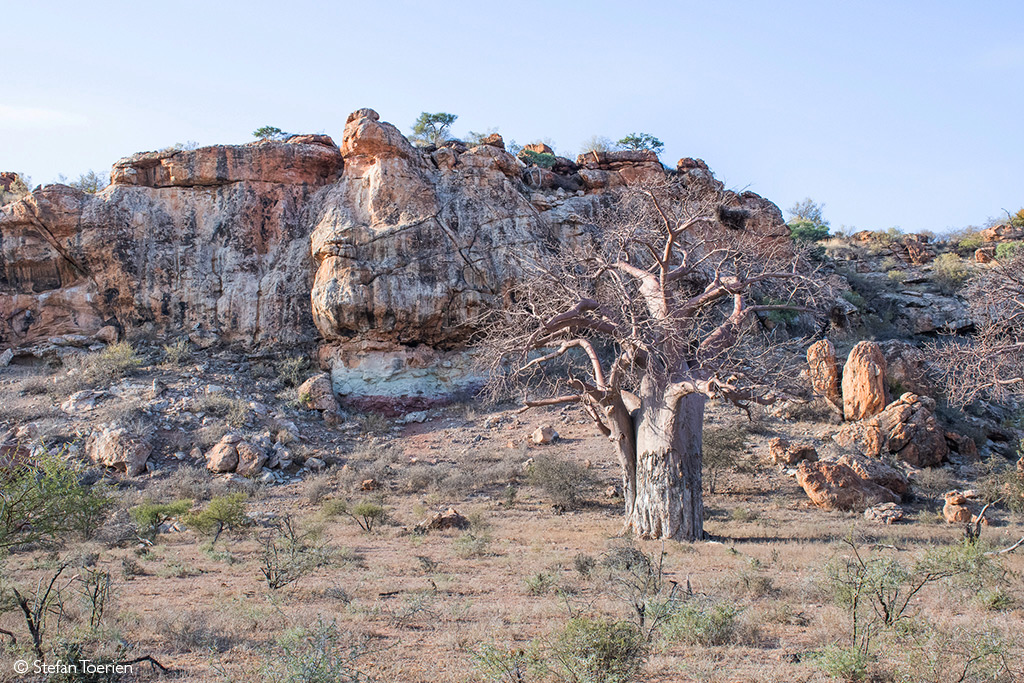
Lucky visitors may even be fortunate enough to glimpse one of the park’s white rhinos or a leopard lounging in the forest. The park is also occasionally home to one of South Africa’s only free-ranging lion populations, who come and go from the park at will. Similarly, packs of African wild dogs (painted wolves) make rare but exhilarating appearances from time to time. And, of course, every wildlife encounter is made all the more special by the spectacular backdrop against which it unfolds, especially as the dry season sets in and animals are drawn to the banks of the Limpopo.

The skies above Mapungubwe are adorned with over 400 bird species, from vibrant bee-eaters to majestic raptors, creating a kaleidoscope of colours that dance in the African sunlight. The crags of the sandstone cliffs have attracted nesting pairs of majestic Verreaux’s eagles, while the dense foliage around the river offers the perfect habitat for Pel’s fishing owls. One of the best ways to experience bird life in the park is to set out across the wooden platforms of the treetop walkway. (It is important to note that though the Limpopo is never really grey-green or greasy, it can be significant and has been known to wash parts of the walkway occasionally – so check beforehand if the canopy is open).


Explore & stay in Mapungubwe
Mapungubwe National Park is both a premier national park and a time capsule, preserving South Africa’s timeless heritage for generations to come. It is a destination that offers the chance to delve into the annals of history, connect with the natural world, and gain a deeper appreciation for the continent’s diverse cultural tapestry. Though the park is small and could arguably be explored in a day, there is no question that a few days are needed to do it (and its story) justice.
There are a couple of camps, ranging from basic safari tent accommodation to relatively luxurious chalets, all of which are ideally positioned to take in some of the park’s diverse landscapes. There is also a well-maintained campsite for those looking for a fully immersive experience and more self-sufficient experience. Guided drives are offered, but visitors can self-drive around the park, though some routes are only accessible with a 4X4. Due to its more recent and controversial 20th-century history, the Mapungubwe is divided into eastern and western portions by a section of private property inaccessible to park guests. One has to exit the park to move between the two, but the drive is short and scenic.
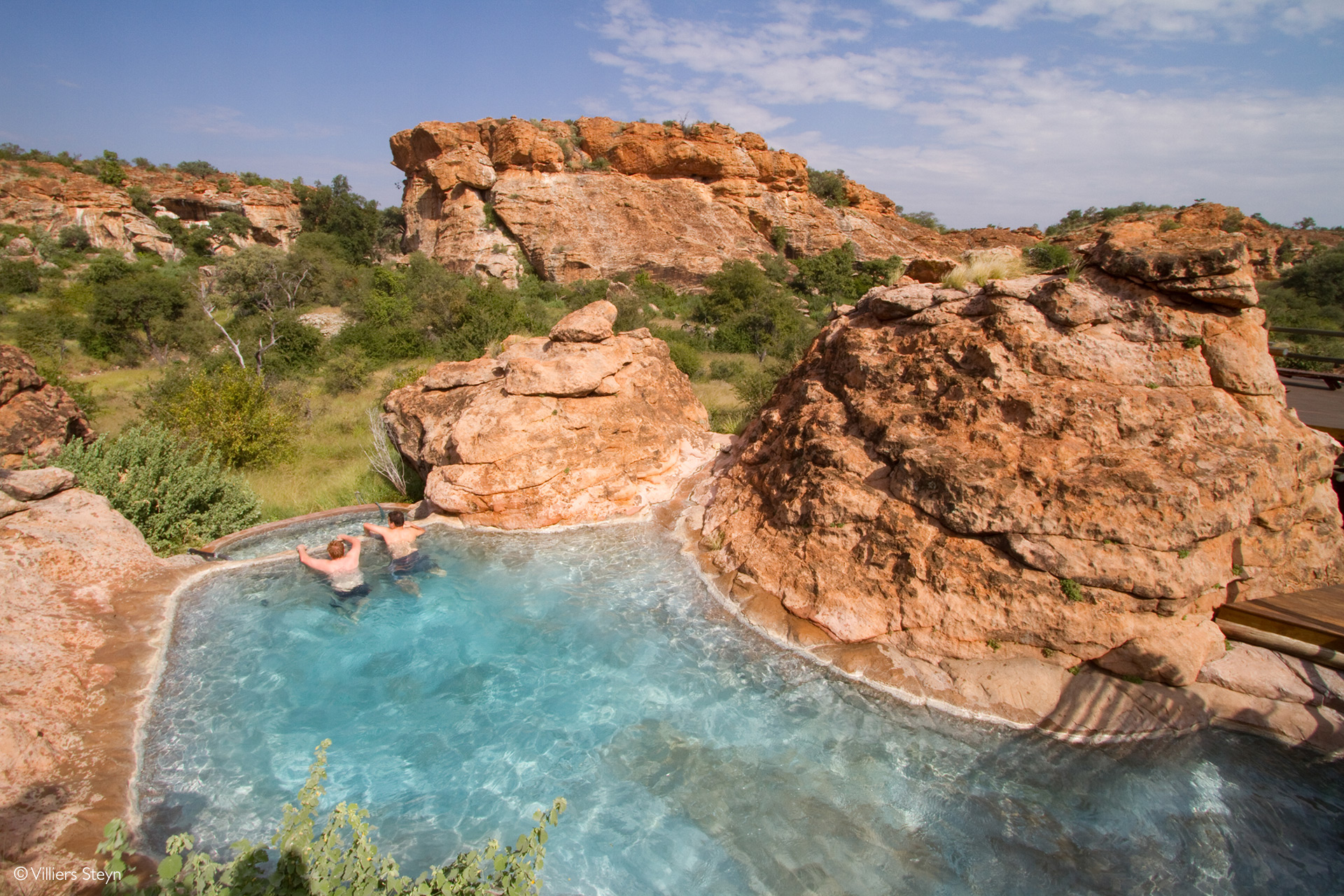
Mapungubwe is situated in an arid and warm part of South Africa, and summer temperatures from October to April regularly top the mercury at over 45˚C. Most people prefer to visit during the dry winter from May until September, when the daytime temperatures are cooler, and wildlife viewing is most spectacular. However, those that tolerate heat well would be rewarded on a summer visit when the migratory birds arrive, and the rains have washed away the dust haze, accentuating the summer greens and spectacular scenery.

Resources
Botswana’s Tuli Block, also part of the Greater Mapungubwe Transfrontier Conservation Area, is a place where the wind carries stories of the past, whispering over rocks, around baobabs and across the vast wilderness. Read more about Tuli here.
Read more about the ancient and sacred Thulamela site in Kruger National Park here.
To comment on this story: Login (or sign up) to our app here - it's a troll-free safe place 🙂.![]()






